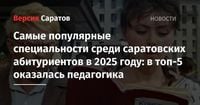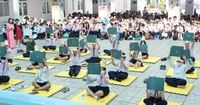As the academic year draws to a close, a recent survey reveals the top choices for higher education among students in Samara, Russia. Conducted by the job search service SuperJob from April 1 to April 21, 2025, the survey highlights a significant trend: the overwhelming preference for information technology (IT) fields among graduating students.
According to the findings, 65% of parents of 11th-graders reported that their children are opting for university education. This is a notable increase in the pursuit of higher learning, as 9% of these parents indicated their children would choose to attend a college instead. Among the 9th-graders surveyed, 54% of those not planning to continue to the 10th grade expressed intentions to enroll in secondary vocational schools.
When it comes to specific fields of study, the IT sector stands out as the most popular choice for university entrants in 2025. A remarkable 27% of children expressed aspirations to become programmers or cybersecurity specialists. This aligns with a broader trend seen across the country, where the demand for tech-savvy professionals continues to rise.
Following IT, engineering specialties ranked second in popularity, chosen by 16% of respondents. This reflects a growing recognition of the importance of engineering roles in today’s job market. In third place, the medical profession garnered interest from 13% of students, underscoring the enduring appeal of healthcare careers.
Additionally, 8% of children indicated plans to pursue higher education in fundamental or applied sciences, while another 8% expressed interest in becoming teachers. The field of jurisprudence attracted the attention of 5% of respondents, showing a modest interest in legal careers.
On the vocational education front, IT specialties also emerged as the leading choice among those entering secondary vocational institutions, with 22% of applicants selecting this path. The medical field followed closely behind, with 13% aspiring to become nurses or paramedics. Blue-collar professions in construction and manufacturing secured the third spot, appealing to 11% of students.
The survey, which included responses from 2,000 parents of graduates from 9th and 11th grades across Russia, highlights the shifting priorities and aspirations of today’s youth. The results indicate that students are increasingly aware of the skills required in a rapidly evolving job market, particularly in technology and healthcare.
As the educational landscape continues to adapt to the needs of the economy, the emphasis on IT and engineering reflects a broader societal shift towards digitalization and innovation. Parents and educators alike are recognizing the importance of equipping students with the necessary skills to thrive in these competitive fields.
Overall, the findings from SuperJob provide valuable insights into the educational choices of students in Samara, showcasing a clear trend towards technology and engineering as preferred pathways for future careers. As we look ahead, it will be interesting to see how these preferences shape the workforce of tomorrow and the implications for educational institutions in the region.





